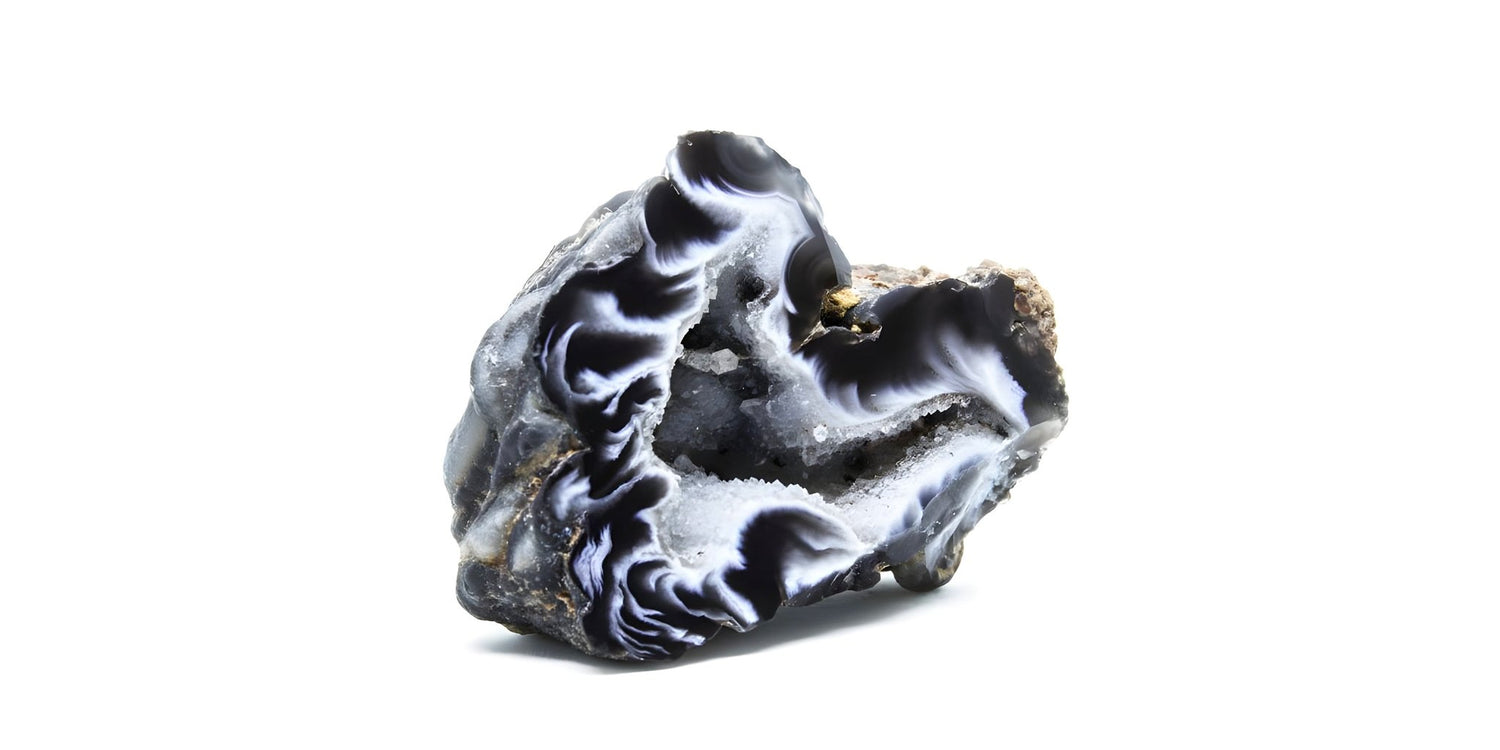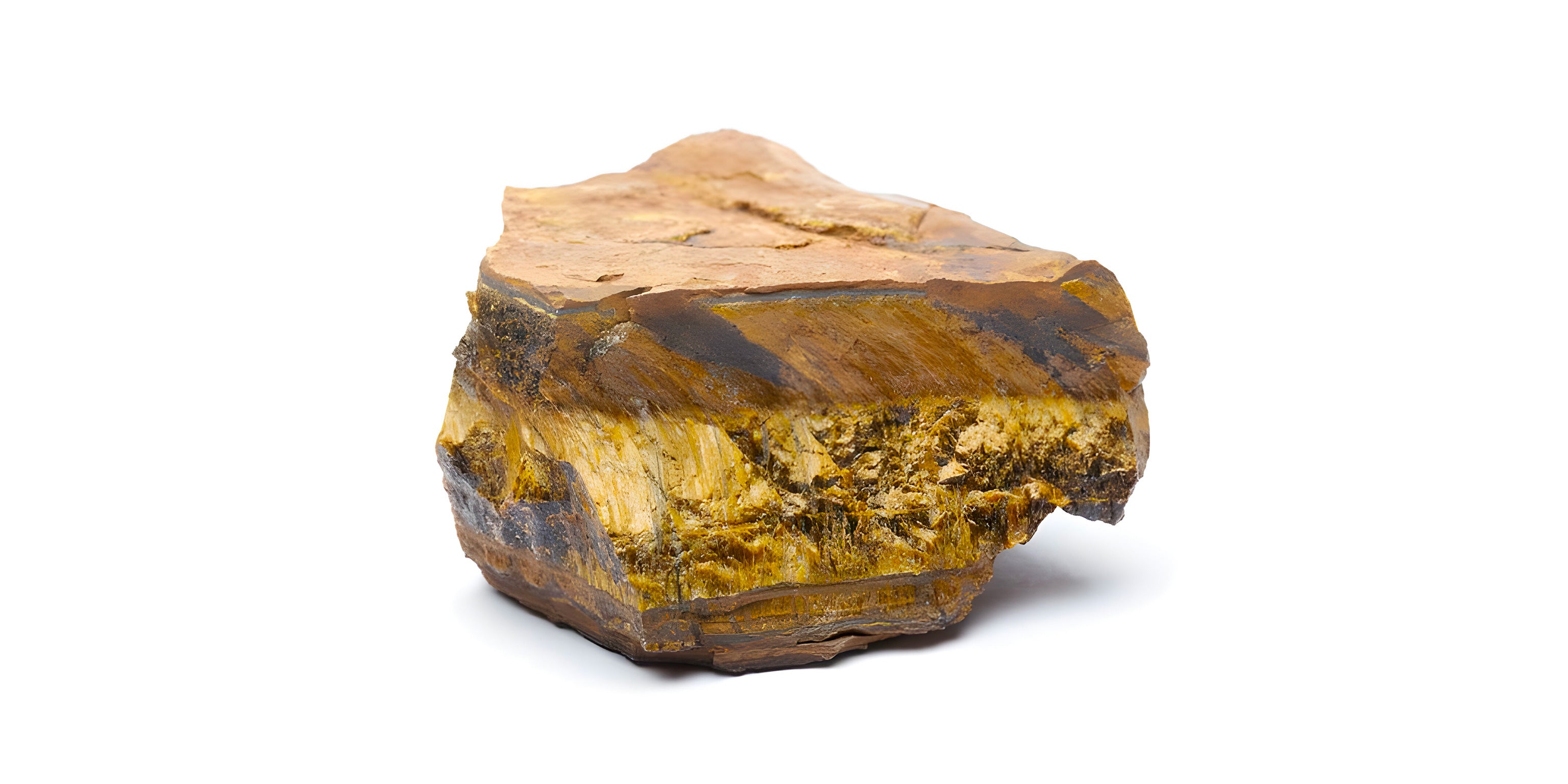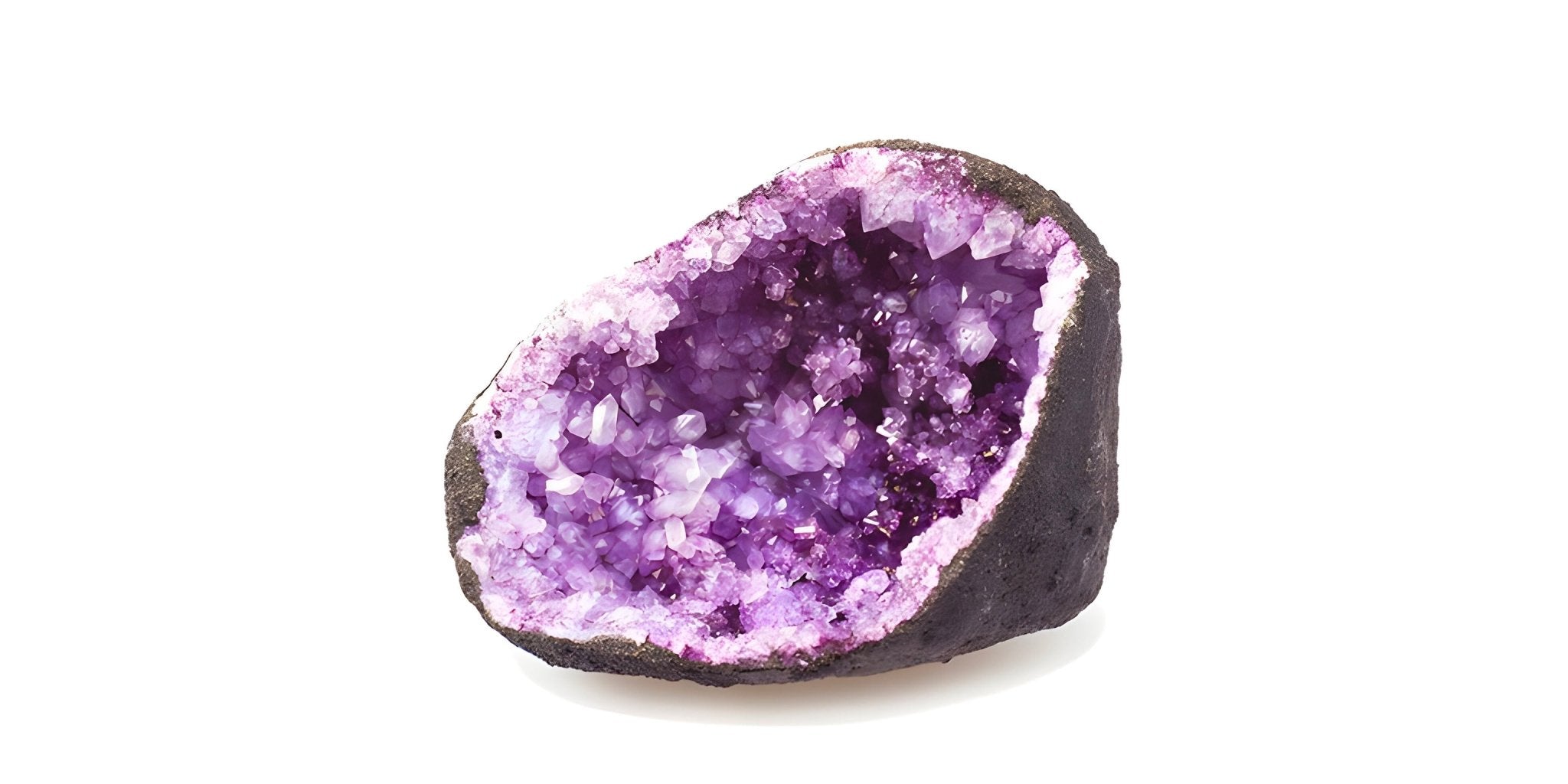Onyx Stone Identity Card
- Origin of the name: The name "onyx" comes from the Greek word "onyx," meaning "nail" or "claw," referring to the legend in which Cupid cut the divine nails of Venus with an arrow while she slept, and the gods transformed these nails into stone so they would never perish.
- Group: Quartz (Silicates).
- Chemical composition: SiO2 (silicon dioxide), onyx is a form of agate quartz, characterized by its alternating color bands.
- Crystal system: Rhombohedral.
- Hardness: 6.5 to 7 on the Mohs scale, making it quite durable for use in jewelry.
- Deposits: Onyx is mainly found in Brazil, India, Madagascar, Mexico, Uruguay, and the United States.
- Color(s): Although black onyx is the most famous, this stone can display white, gray, blue, red, and yellow bands. Pure black onyx is rare, with most samples showing alternating color bands.
- Chakras: Onyx is mainly associated with the root chakra (Muladhara), promoting grounding, strength, and stability.
Onyx is a powerful stone, renowned for its protective properties and its ability to provide strength and support in difficult situations, encouraging vigor, stability, and endurance.
Where does the name Onyx come from?
The name "onyx" intrigues and fascinates, evoking the mysterious depths and dark brilliance of the stone it designates. But where does this name actually come from, and what story lies behind this term that has crossed the ages to reach us today? Let us delve into the origin of the name onyx to discover the rich heritage of this captivating gem.
Ancient and Etymological Origins
The word "onyx" originates from ancient Greek, derived from the word "ὄνυξ," which means "nail" or "claw." This name comes from an old Greek legend, which tells how Cupid, the god of love, cut the divine nails of the goddess Venus while she slept. The deities, not wanting these divine nails to be corrupted on earth, transformed them into stone, giving birth to onyx.
Symbolism and Meaning
This mythological origin gives onyx a strong symbolic dimension, linking it to beauty, love, and transformation. In antiquity, onyx was therefore considered to possess protective and lucky properties, due to its divine connection. Its association with the image of the nail also suggests an idea of strength and resilience, qualities that have long been attributed to onyx.
Onyx through the Ages
Over the centuries, onyx has been used and valued in many cultures, from the ancient Egyptians to the Romans, including Greek civilizations. Each culture interpreted and used onyx in its own unique way, whether for engravings, protective amulets, or as decorative elements. However, the name "onyx" has endured, passing through the ages as a testament to humanity's ongoing fascination with this stone.
Varieties and Colors
Although onyx is often associated with its black variety, the stone can display a range of colors, including white, red, or brown bands. The name "onyx," however, has remained primarily linked to the image of the black stone, a symbol of elegance and mystery. The different colors of onyx add to the richness of its history and to the diversity of meanings and uses attributed to this stone over time.
What is the history of the Onyx stone?
Onyx, with its deep hues and contrasting color bands, is a stone that evokes mystery and elegance. Its rich and varied history spans civilizations, bearing witness to its importance and value through the ages. From antiquity to the present day, onyx has captivated the imagination of people, becoming a symbol of protection, power, and beauty.
Ancient Civilizations and Beliefs
The use of onyx dates back to ancient Egypt, where it was used to create jars and bowls, as well as amulets believed to protect the dead in the afterlife. The Romans, for their part, carved seals and cameos from onyx, valuing its ability to create a striking contrast between layers of color. For the Greeks, onyx was associated with the legend of Eros (Cupid) cutting the divine nails of the goddess Aphrodite, symbolizing transformation and eternity.
Middle Ages and Renaissance
In the Middle Ages, onyx was often used to create religious objects such as crucifixes and rosaries, due to the belief in its protective properties against evil spirits. During the Renaissance, onyx gained popularity as a material for cameos and intaglios, reflecting the era's taste for classical art and mythology, and showcasing the craftsmanship of artisans of the time.
Symbolism and Virtues
Throughout history, onyx has been credited with many virtues and meanings. It was considered a stone of vigor, offering strength and support in difficult times. Its dark appearance was also associated with protection against negative energies, making onyx a prized talisman for personal defense. In addition, onyx is said to stimulate self-discipline, helping those who wear it achieve greater emotional and mental stability.
Onyx in Modern Cultures
Today, onyx continues to be a prized gemstone in jewelry, appreciated for its unique aesthetics and rich symbolism. Its shades, ranging from deep black to marbled white, with various intermediate colors, make it a versatile and elegant stone. Onyx is also used in interior decoration, where it adds a touch of sophistication and mystery.
What is the origin and composition of the Onyx stone?
Onyx, a stone of deep mysteries and captivating beauty, has fascinated humanity since antiquity. Its unique composition and geological origin give it a special place among gemstones. Let us explore the secrets of onyx, from its millennia-old formation to its complex structure that captivates the eye.
Geological Origin
Onyx is a variety of chalcedony, which belongs to the quartz family. It forms from silica deposits in the cavities of volcanic rock or in ancient river and lake beds. These deposits accumulate in layers, creating the characteristic parallel bands of onyx. This layered formation is the result of repeated episodes of dissolved silica seeping into these cavities and hardening over time. Onyx is distinguished by its contrasting color bands, often in black and white, but it can also display a range of colors including red, brown, and green.
Chemical Composition
The chemical formula of onyx is SiO2, indicating that it is composed of silicon dioxide. This composition is typical of quartz, but onyx is distinguished by its unique crystalline structure and colored bands. The different colors of onyx are due to mineral impurities present during its formation. For example, the presence of iron and carbon can give onyx its rich black hues, while manganese can contribute to pink or red shades.
Formation Process
The process of onyx formation begins with water saturated with silica under specific geological conditions. When this silica-rich solution penetrates the cavities of the host rock, it starts to crystallize, first forming quartz, then chalcedony in successive layers. Variations in the composition of the siliceous solution, as well as environmental conditions such as temperature and pressure, contribute to the formation of the distinctive bands of onyx.
Main Deposits
The main onyx deposits are found in geologically active regions where conditions have favored the formation of chalcedony. These regions include Brazil, India, Madagascar, Mexico, Uruguay, Armenia, and the United States, among others. Each deposit produces onyx with unique characteristics, depending on the local minerals and formation conditions.
What are the virtues of the Onyx stone (physical and psychic)?
Onyx, this fascinating stone with its deep black color and mysterious bands, is much more than just an aesthetic gem. Throughout the ages, it has been attributed with many virtues, both physical and psychic, making it precious for those seeking to benefit from its healing and protective properties.
Physical Virtues of Onyx
Physically, onyx is recognized for its beneficial effects on overall body health. It is said to help strengthen the immune system, thereby increasing resistance to infections and illnesses. This stone is also believed to have a stabilizing effect on people with circulatory disorders, helping to improve blood circulation.
In addition, onyx is often used to support bone and dental health, thanks to its ability to balance the body's energies and promote tissue regeneration. It can also provide support in cases of hearing disorders by improving the function of the inner ear.
Psychic and Emotional Virtues
Onyx is particularly effective when it comes to psychic and emotional benefits. It is known for providing strength and support during periods of physical and mental stress, helping to overcome challenges and fears. By acting as an emotional stabilizer, onyx helps maintain a calm and serene state of mind, thus promoting better management of negative emotions such as sadness and anxiety.
This stone is also known for enhancing concentration and determination, making it a valuable ally for those seeking to achieve their goals with perseverance and discipline. Onyx stimulates a sense of responsibility and decision-making, helping to clarify thoughts and focus energy productively.
Protection and Grounding
One of the most renowned virtues of onyx is its ability to provide protection and grounding. By forming a shield against negative energies, it protects its wearer from harmful influences and psychic attacks. Onyx is also valued for its grounding properties, helping to anchor individuals in the present moment and strengthen their connection to physical reality.














